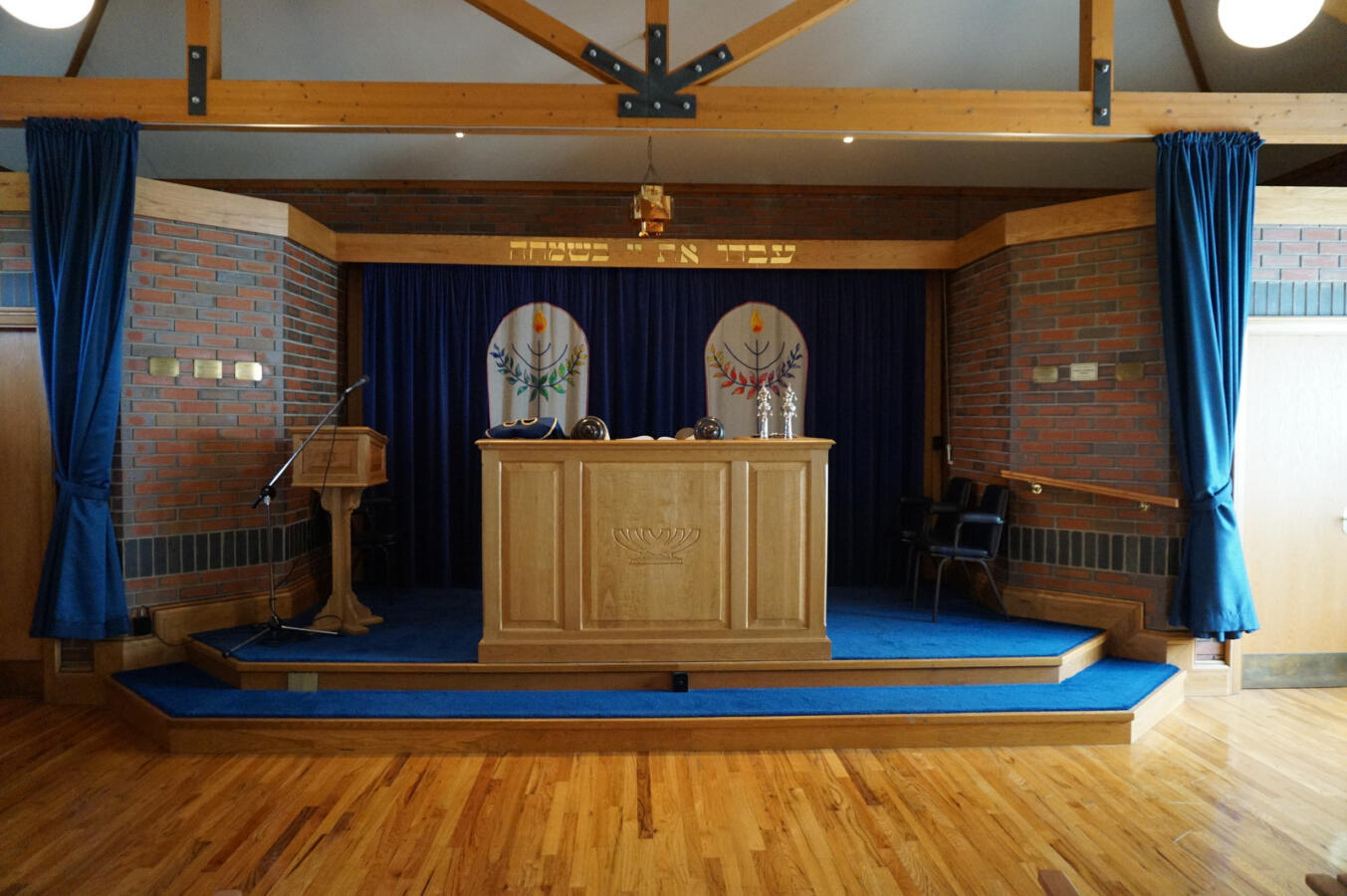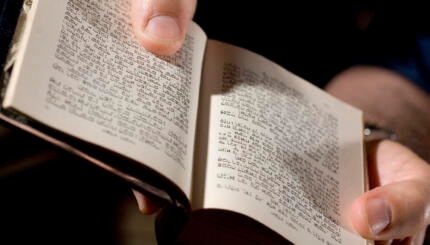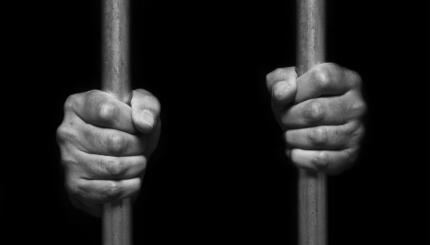The bimah (pronounced BEE-ma) is the raised platform in the synagogue from which the Torah is read and services led.
While in many traditional and Sephardic synagogues, the bimah is located in the center of the sanctuary, in most modern liberal synagogues, the bimah is at the front, with the ark (the cabinet in which the Torah scrolls are stored) located behind it. The ner tamid lamp (representing eternal light and a reminder of the ancient Temple in Jerusalem) traditionally hangs above the ark.
In many synagogues, the president, rabbis and other leaders or honored guests, such as the family of a bar/bat mitzvah celebrant, sit on chairs on the bimah during services.
In Modern Hebrew, bimah refers not just to a synagogue platform, but also to a theater stage.
With your help, My Jewish Learning can provide endless opportunities for learning, connection and discovery.
ark
Pronounced: ark, Origin: English, the place in the synagogue where the Torah scrolls are stored, also known as the aron kodesh, or holy cabinet.
bimah
Pronounced: BEE-muh, Origin: Hebrew, literally "stage," this is the raised platform in a synagogue from which services are led and the the Torah is read.
Torah
Pronunced: TORE-uh, Origin: Hebrew, the Five Books of Moses.



